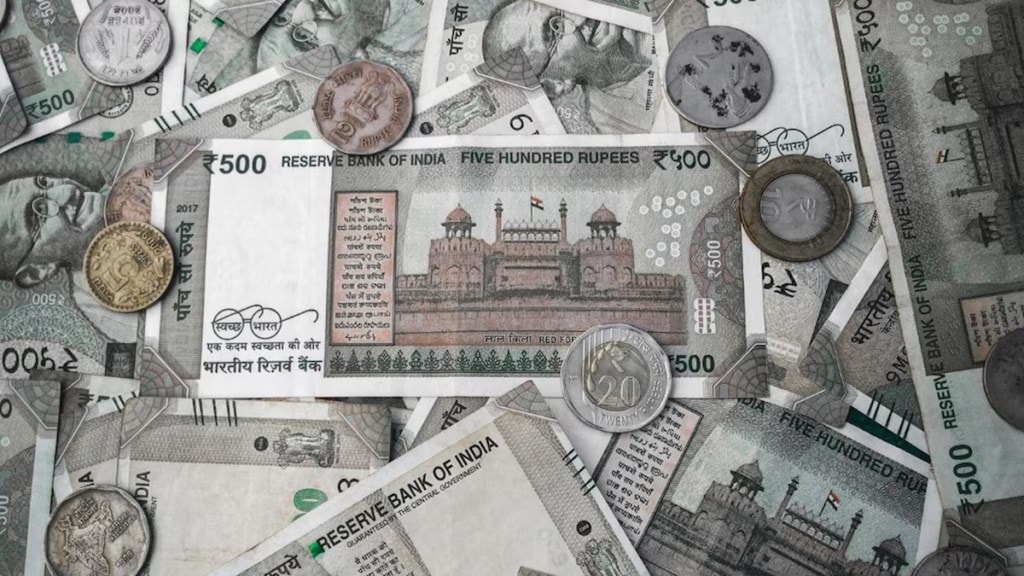By N Chandra Mohan
As the new year kicks off, the persisting weakness of the rupee vis-à-vis the US dollar in 2024 —although not as much as China’s yuan, South Korea’s won, Türkiye’s lira, or Indonesia’s rupiah, among other currencies—raises important questions on its effect on the Indian economy. Those who welcome a depreciating rupee are exporters, as it improves their competitiveness in selling their merchandise abroad. Those who would complain include Indian travellers, who now need to exchange more rupees to acquire dollars for their expenses abroad, so too will thousands of students who plan to study overseas as their loan expenses will be more.
A cheaper rupee is also bad news for the oil import-dependent Indian economy as imports become costlier, besides contributing to higher inflation. The silver lining, however, is that despite geopolitical tensions in West Asia, global crude prices are not ruling at elevated levels due to relative excess supply amidst lower demand for oil. Low prices offset the rupee impact of the costs of rising energy imports. The country’s overall import bill will rise as Indian industry is highly import-intensive, thanks to liberal access to internationally available raw materials and intermediate goods — like for assembling smartphones in the country — which become costlier.
The coming year will see more downward pressure on the rupee as the dollar further strengthens after Donald Trump returns as the 47th President of the US. Paradoxically, while he wants a weaker dollar to boost American exports and protect jobs, his tariff bluster only makes the dollar stronger. Higher tariffs impact domestic consumers through higher prices. His presidency will also widen the budget deficit because of tax cuts and higher spending, further driving up inflation. With the US Federal Reserve cautious on cutting interest rates, the consequent higher yields on US treasuries will attract inflows from foreign investors who pull out from emerging markets like India, weakening the rupee.
What can policymakers do about the rupee? Since 1993, the Reserve Bank of India (RBI) has followed a flexible exchange rate policy, which allowed the currency unit to be largely market-determined. It has regularly maintained that it doesn’t target any particular exchange rate of the rupee, although it can and does intervene to smooth any sharp upward or downward movements. During the global financial crisis from mid-2007-early 2009, or the so-called “taper tantrum”, when it hits lows of Rs 68.8 to a dollar in August 2013, the RBI did not defend the rupee by drawing down foreign exchange reserves. Instead, it even built up reserves through these episodes.
During the last couple of years, however, the RBI’s stance shifted to an inflexible exchange rate policy, argues Arvind Subramanian, former chief economic advisor to the government of India. The RBI’s interventions sought to ensure a stable exchange rate of the rupee vis-à -vis the dollar by drawing down foreign exchange reserves by as much as $100-150 billion since October 2021. Last Friday, for instance, the RBI resorted to dollar sales of $2.5 billion via state-run banks to defend the rupee when it hit a two-year low.
To be sure, the country has adequate foreign exchange reserves — which are enough to take care of a year’s imports — to defend the currency unit.
The shift in stance and its consequences can be better understood through the “trilemma” of policymaking. According to international finance theory, if policymakers want to keep the economy open to international flows of capital, use monetary policy to stabilise the economy, and maintain stability in the exchange rate, only two of these three objectives can be satisfied. Since the reforms of the early 1990s, the economy has remained open to foreign capital, while the RBI’s strong monetary policy checked inflation and boosted economic growth. Exchange rate stability had to be given up, reflected in the rupee being allowed to fluctuate in line with market forces.
Seeking stability in the exchange rate—which has made the rupee overvalued in the process—while the economy is open to capital inflows and outflows entails abandoning a strong monetary policy. According to Subramanian, this shift in stance of late has damaged the country’s export competitiveness by 10% and resulted in a tightening of monetary conditions at a time of slowing economic growth. Interestingly, the latest official monthly review of the economy appears to concur with this assessment as it mentions that “a combination of monetary policy stance and macroprudential measures by the central bank may have contributed to the demand slowdown” in the economy.
The upshot is that the downtrend in the rupee is likely to persist, if not intensify, with the dollar entering a phase of strength during the forthcoming Trump presidency. Analysts expect Rs 86 per dollar by end-March and Rs 87 per dollar by end-2025. While this would benefit exporters, this is not an unmixed blessing as the currencies of rival emerging economies depreciate more against the dollar. Instead of defending the indefensible, the RBI may be better off reverting to its earlier stance of a flexible exchange rate policy that allows fluctuations in the Indian currency unit, in line with cyclical conditions.
The writer is an economics and business commentator based in New Delhi.
Disclaimer: Views expressed are personal and do not reflect the official position or policy of FinancialExpress.com. Reproducing this content without permission is prohibited.





